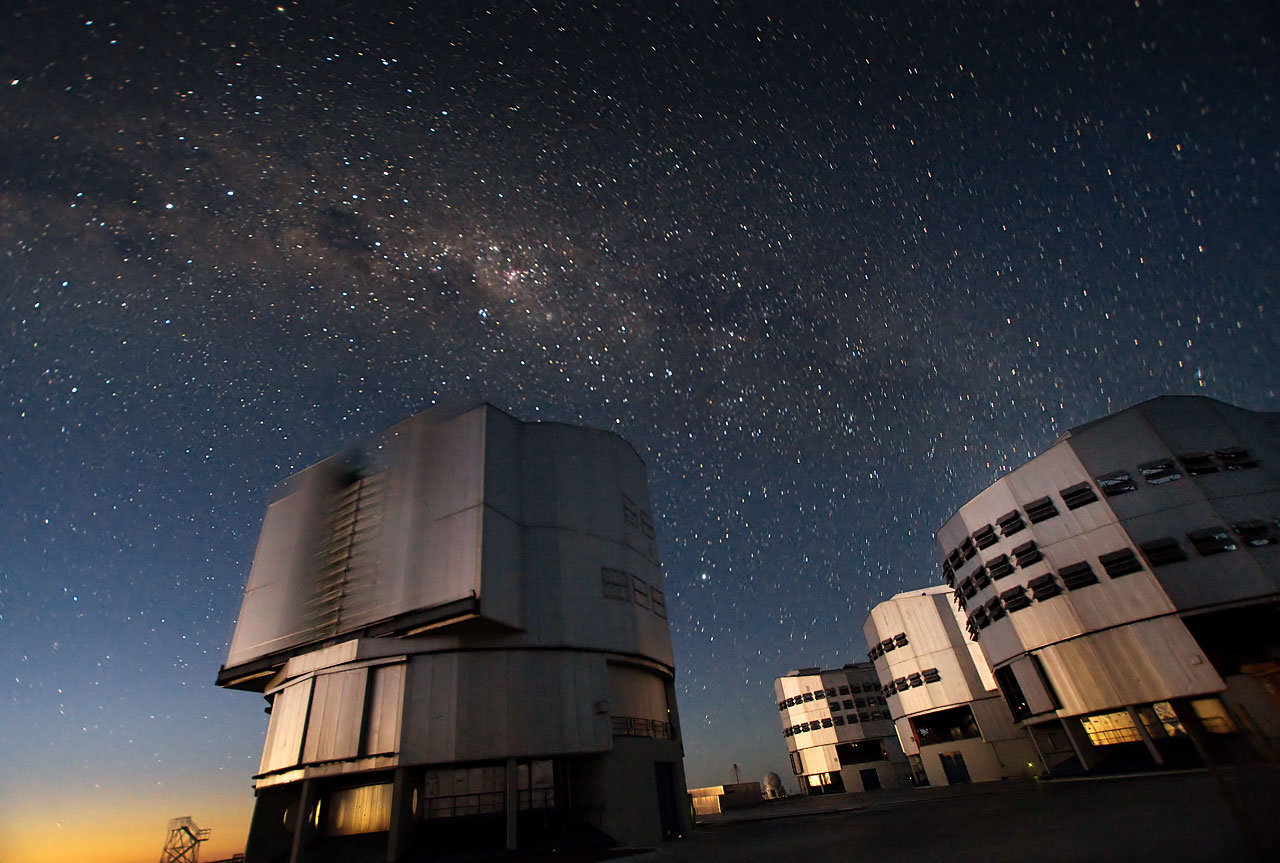Journey to the Big Bang through the lithium of a Milky Way star
APRIL 3, 2019
by Instituto de Astrofísica de Canarias

Credit: Instituto de Astrofísica de Canarias
Researchers at the Instituto de Astrofísica de Canarias (IAC) and the University of Cambridge have detected lithium in a primitive star in our galaxy. The observations were made at the VLT, at the Paranal Observatory of ESO in Chile.
In astrophysics, any element heavier than hydrogen and helium is termed "metal" and lithium is among the lightest of these metals. Researchers at the IAC and the University of Cambridge have been able to detect lithium in a primitive star. This is the star J0023+0307, discovered a year ago by the same team of scientists with the Gran Telescopio Canarias (GTC) and the William Herschel Telescope (WHT) of the Observatorio del Roque de los Muchachos.
This discovery could give crucial information about the creation of atomic nuclei ("nucleosynthesis" in the Big Bang. "This primitive star surprises us for its high lithium content, and its possible relation to the primordial lithium formed in the Big Bang," notes David Aguado, a researcher associated with the University of Cambridge and formerly doctoral student of the IAC/ULL, who is the lead author on this article.
in the Big Bang. "This primitive star surprises us for its high lithium content, and its possible relation to the primordial lithium formed in the Big Bang," notes David Aguado, a researcher associated with the University of Cambridge and formerly doctoral student of the IAC/ULL, who is the lead author on this article.
This star is similar to our sun, but with a much poorer metal content, less than one thousandth part of that of the solar metallicity. This composition implies that we are dealing with a star which was formed in the first 300 million years of the universe, just after the supernovae marking the final phases of the first massive stars in our galaxy.
More:
https://phys.org/news/2019-04-journey-big-lithium-milky-star.html





VLT telescopes at Paranal (Very Large Telescopes)
Paranal Observatory- Information:
https://www.eso.org/public/teles-instr/paranal-observatory/
Science:
https://www.democraticunderground.com/122863353





